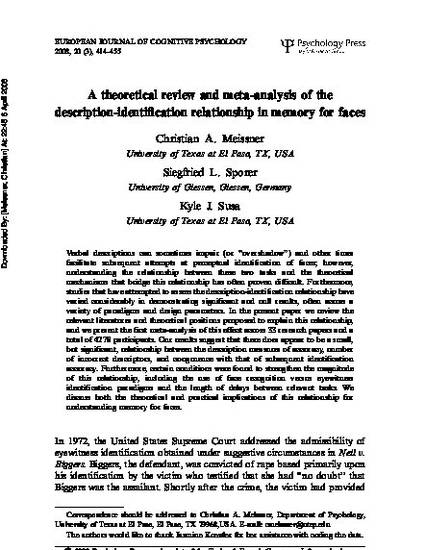
Verbal descriptions can sometimes impair (or “overshadow”) and other times facilitate subsequent attempts at perceptual identification of faces; however, understanding the relationship between these two tasks and the theoretical mechanisms that bridge this relationship has often proven difficult. Furthermore, studies that have attempted to assess the description-identification relationship have varied considerably in demonstrating significant and null results, often across a variety of paradigms and design parameters. In the present article we review the relevant literatures and theoretical positions proposed to explain this relationship, and we present the first meta-analysis of this effect across 33 research articles and a total of 4,278 participants. Our results suggest that there does appear to be a small, but significant, relationship between the description measures of accuracy, number of incorrect descriptors, and congruence with that of subsequent identification accuracy. Furthermore, certain conditions were found to strengthen the magnitude of this relationship, including the use of face recognition vs. eyewitness identification paradigms and the length of delays between relevant tasks. We discuss both the theoretical and practical implications of this relationship for understanding memory for faces.
Available at: http://works.bepress.com/christian_meissner/32/
